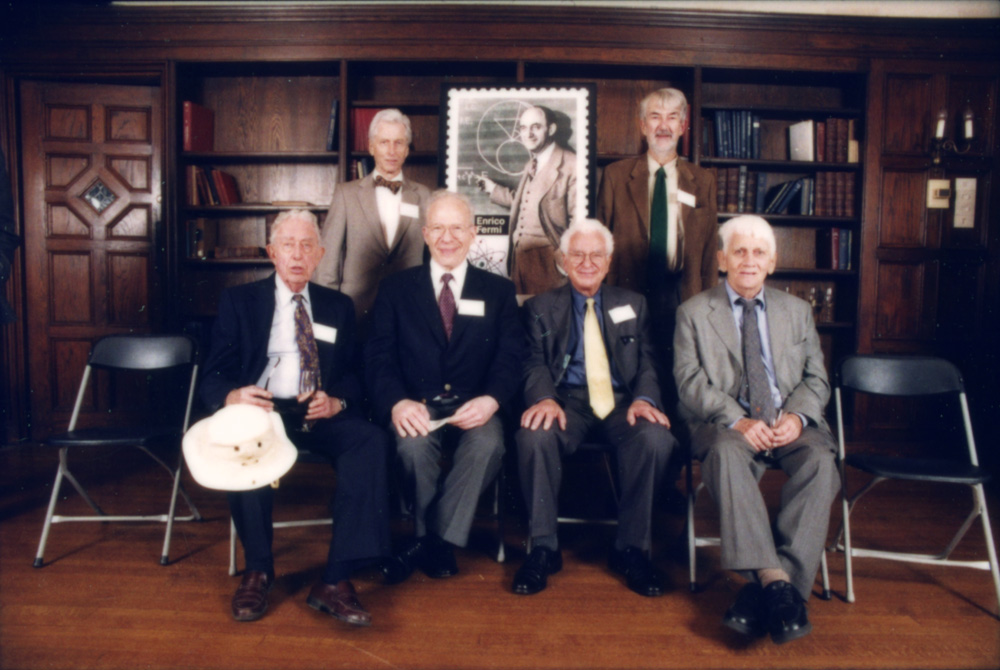Paleontologist Paul Sereno, a professor in the department of organismal biology and anatomy, announced in the August 2003 issue of Contributions of the Museum of Paleontology of the University of Michigan the discovery of a new species of dinosaur named Rajasaurus Narmadensis, a 30-foot horned carnivore that lived 65 million years ago and was of comparable size to the famous predator the Tyrannosaurus Rex.
Sereno and professor Paul Wilson of the University of Michigan, a former UC graduate student, discovered the new species with the help of Indian paleontologist Suresh Srivastava, who uncovered the bones in a 1982-1984 excavation.
On an expedition in 2001, Srivastava showed Sereno and Wilson the then-unidentified bones in the Regional Paleontological Laboratory for the Geological Survey of India office in Jaipur. After examining some of the findings, they identified the bones of several known dinosaurs until Sereno can across a specimen he had not recognized before.
“We realized that the bone belonged to a different species when we had enough of the dinosaur, particularly its skull, to look at,” Sereno said in a taped interview. “The skull had a very unusual horn on the top of its head that didn’t match anything that had been found before.”
Sereno and Wilson then arranged to borrow the bones and have them studied at the University. Once here, the team started to reconstruct the skeleton using the remaining fossils and detailed maps drawn by Indian paleontologists in 1984 documenting the position of the fossil bones when they were discovered in the field.
The project, funded by the National Geographic Society, was able to reconstruct the skull by the spring of 2003.
“We knew of fragments and bones [in India],” Sereno said to National Geographic Magazine. “But this skull reconstruction offers the first glimpse into the lost world of the Indian dinosaur.”
The Rajasaurus’s full name means “the regal dinosaur of the Narmada Valley,” the river basin in the western Indian state of Gujarat where it was found. It is a member of the abelisaur family, a subclass of carnivorous dinosaurs found only in the former super continent of Gondwanaland, which consisted of India, South America, and Africa. Its discovery may help reveal some of the mysteries of the Paleozoic Era, including what led to the extinction of the dinosaurs.
While India itself has long been believed to have once held dinosaur life, the country has a host of hostile factors for paleontologists to deal with in their expeditions.
The site where the Rajasaurus was found contained sediments closely related to one of the biggest volcanic activities on Earth in the last 500 million years, according to National Geographic.
Wendy Taylor, Sereno’s project manager, said that the discovery of the Rajasaurus offers an insight into the dinosaur diversity of India in the Late Cretaceous period. Though many paleontologists suspected India’s connection to other dinosaur hotbeds, there was little direct proof until Rajasaurus’s unearthing showed that the skull resembled the skulls of dinosaurs found in Madagascar.
“[This discovery] supports the theory that when the continents were breaking apart in the Cretaceous, Africa broke away first, with India, Madagascar and South America breaking away later in the Cretaceous.” Taylor said. “This is supported by the study of this group of dinosaurs—i.e., Rajasaurus is more closely related to dinosaurs found on South America and Madagascar than it is to those discovered on Africa.”
Carlos Sanchez, a second-year in the College and a previous student volunteer for Sereno, felt the discovery of Rajasaurus furthered Sereno’s quest to sketch out the dinosaur family tree by outlining the evolutionary changes found in the dinosaurs’ fossilized remains.
“By naming this new species, Dr. Sereno has helped extend the range of the abelisaur carnivorous dinosaurs and enhanced our knowledge about the poorly known dinosaurs of the southern continents and our knowledge of dinosaurs in general,” Sanchez said.
In addition to the Rajasaurus, Sereno has been involved in the discovery and/or identification of at least twenty species of dinosaur since 1988. He has won several awards in his field, including the Walker Prize, for extraordinary contributions in the field of paleontology, from the Boston Museum of Science in 1997, and the Columbia University’s University Medal for Excellence in 1999.
Currently, he has been on expedition in Niger since early September.








